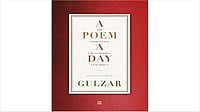An often used analogy for anthologies is the one about the gardener who plucks the choicest blooms from his garden and puts together the loveliest of bouquets. Since he knows his garden so well, he is seen as the best judge of what should go into the making of the guldasta; yet he is not expected to be objective and his choice is governed as much by personal liking as availability. So it is with editors of anthologies. But when the editor is Muhammad Umar Memon, veteran critic, translator and academic, you know that his selection is likely to be the best. And when he selects and translates a collection called The Greatest Urdu Stories Ever Told, you take him for his word. And you will not be disappointed.
For, found within the pages of this aqua-covered, beautifully-produced volume are some old favourites and several new and amazing discoveries. There are the stories many of us have read: Manto’s Toba Tek Singh, Rajinder Singh Bedi’s Lajwanti, Ahsfaq Ahmad’s The Shepherd, Premchand’s The Shroud, Ghulam Abbas’s Aanandi. Then there are writers whose names are familiar to anyone who has done even a cursory reading of Urdu fiction: Qurratulain Hyder, Intizar Husain, Ismat Chughtai, Abdullah Hussein, Naiyer Masud; though here too Memon’s selection of stories from their vast and varied ouvre makes for interesting reading. Others such as Zakia Mashhadi, Syed Muhammad Ashraf, Jamila Hashmi, Salam Bin Razzaq, Ali Imam Naqvi, while by no means new or emerging writers, are familiar through some recent translations. But where this volume really scores is in its introduction to relatively new voices, new that is to the English reader. Some such as Tassaduq Sohail, Anwer Khan, Khalida Asghar, Siddiq Aalam, Sajid Rashid and others are new even to seasoned Urdu readers. Taken together, the 25 stories trace the chronological development of the Urdu short story from its earliest proponents to its current practitioners, providing an excellent sampler of the many voices and concerns, not to mention styles and techniques, of the Urdu afsana and a measure of the distance it has travelled from the romantic dastaan and fantastic fasana of yore.
In his lucid introduction, Memon outlines the development of Urdu prose, somewhat overshadowed by its more glamorous cousin, Urdu poetry and especially the ghazal. From an early didactic impulse to a passionate engagement with social realism and then an equally determined distancing from socially-engaged and purposive literature, to an individualistic exercise in creativity and imagination: the distance covered in a century is encapsulated in a few pages. Acknowledging the importance of Premchand, whom he dubs the “first professional short story writer in Urdu”, Memon writes, “But even in Premchand, the notion of fiction as an autonomous realm was relentlessly subordinated to a notion of fiction as an instrument of protest, reform, and redress”. Somewhat disparaging of the ‘utilitarian’ fiction of the progressives who wrote exuberantly from the mid-1950s till the early-1960s, he seems to favour those writers who stood outside the Progressive fold and those active after the Progressive upsurge had waned somewhat, that is those who can be termed ‘modernist’ or ‘post-realist’. He describes ‘modern’ as that which “undergrids a set of literary assumptions, viz., that there is internal structure to reality beyond what meets the eye, and human nature is infinitely more complex than was assumed by Progressive writing”.
More than the labels of Progressive or modern or post-modern, what seems to interest Memon, or seems to guide his selection, is what constitutes a successful story. Not social usefulness, not brilliance of technique, not even a sparkling vocabulary. In his own words: “The present selection hopes to achieve two objectives: to present the texture and the flavour of the modern Urdu short story, both as a daring experiment and as a more refined heir to the traditional form; and to eschew all pronouncements about literature’s alleged social relevance.” He concludes with a wish that should find some takers among new-age researchers: “More in the nature of daydreaming, there is also the fervent hope that this collection might prove useful to the comparativist who may wish to assess the nature of the Urdu short story against its counterpart in other major subcontinental languages, specifically Hindi.” Amen to that!
Were it not for the minuscule print, the reading pleasure afforded by this otherwise handsomely produced volume would have been greater. Aleph would do well to spare the readers’ eyesight and not expect them to read over 300 pages of closely packed small print despite its sterling contents.


























